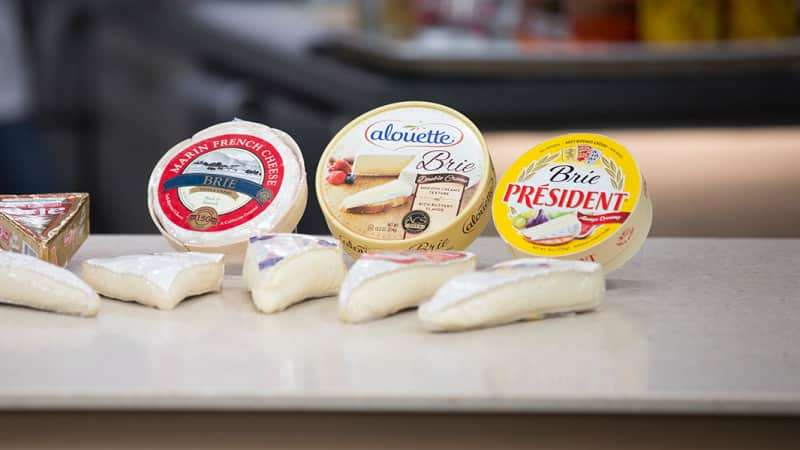The Best Supermarket Parmesan
Taste Test
Think French pedigree and words like “triple crème” indicate the best examples of this cheese plate favorite? So did we—until we learned that good Brie is a matter of culture.
Published May 1, 2015. Appears in America's Test Kitchen TV Season 16: French Pork Chops and Bisque

A few decades ago, Brie was the pinnacle of sophistication on American cheese plates. Its longtime French reputation as the “cheese of kings,” coupled with its lush, buttery, not-too-pungent profile and velvety edible rind, made it at once fashionable and approachable. But Brie sold in America has changed over the years. The original name-protected versions have been banned by the U.S. Food and Drug Administration (FDA) for using raw milk, and these days most products found in supermarkets are produced domestically. You’re also increasingly likely to find specimens that are bland, rubbery, and encased in rinds as stiff as cardboard. And yet, if there was a creamy, satiny, richly flavorful Brie available in the average grocery store, we wanted to know about it. So we gathered 10 nationally available brands that ranged broadly in price (from $5.92 to $19.98 per pound), purposely selecting cheeses that spanned a variety of traits that we thought might affect flavor and texture—in particular, fat content (we included standard-fat, double, and triple crème cheeses), nationality (American or French), and format (some are sold as small wheels, others as wedges cut from larger wheels). We sampled the Bries plain at room temperature (the ideal serving temperature) and also baked into phyllo cups with dollops of red currant jelly to see how the cheeses behaved when heated.
Process of Elimination
We could tell just by handling the cheeses that their textures varied considerably: Wheels and wedges alike ranged from soft and pliable to almost rigid. When we tasted the cheeses, we found that their flavors varied just as much—some were “boring,” with “almost no flavor,” while others tasted “mushroomy” and “nutty-rich.” Heating the cheeses only underscored these differences: Fuller flavors intensified and creamier textures became even plusher, while bland cheeses tasted the same and barely melted at all. When we tallied the scores, we were pleased to find that we could recommend without reservation four out of the 10 cheeses—in particular, a standout wedge that embodied everything we want in Brie: a lush, buttery, full-flavored interior encased in a pillowy rind.
But surprisingly, factors like origin, price, and format had no bearing on our preferences. Though our favorite was a wedge from France, our runner-up was an 8-ounce wheel made in California. And a bargain wedge from Michigan outranked French Bries costing two or three times as much.
We also assumed that Bries labeled triple and double crème would taste richer and creamier than standard-fat cheeses—but that wasn’t always the case. Though cream is generally added to the milk when ma...
The mission of America’s Test Kitchen Reviews is to find the best equipment and ingredients for the home cook through rigorous, hands-on testing.

Kate is a deputy editor for ATK Reviews. She's a culinary school graduate and former line cook and cheesemonger.

This is a members' feature.